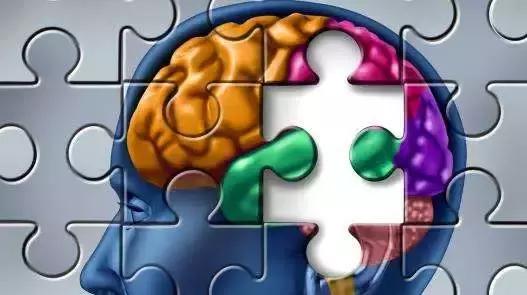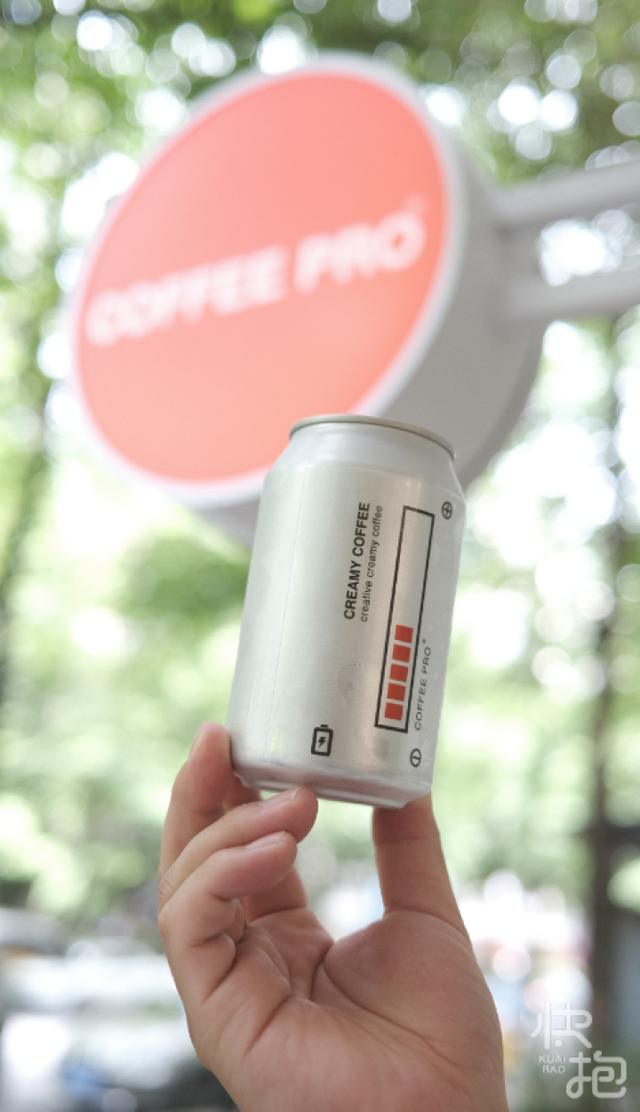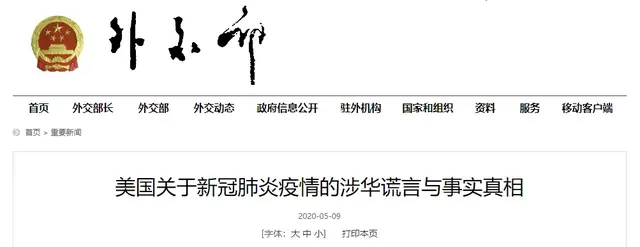中国人群中阿尔茨海默病的预防:现状,挑战和方向

2018年1月,美国礼来公司EXPEDITION3的研究结果发布,该研究是针对Solanezumab抗体的大规模III期临床试验,结果为阴性[1]。主要结局变量在组间无统计学差异,该结果又一次浇灭了阿尔茨海默病(Alzheimre’s disease, AD)治疗领域的研究热情,为治疗AD的众多失败研究又添一例(包括同一公司的EXPEDITION 1和EXPEDITION2)。由于目前尚未发现有望改善病情的药物,该领域越来越多的临床医生和研究者开始相信预防比治疗更有效(可能也更容易)。在西方,许多科学家、说客和倡导团体正在努力说服政府和资助机构加大对AD一级预防工作的投入。一项重要研究US POINTER即将于2018年在美国启动。
在东方,中国正面临前所未有的快速人口老龄化。中国是世界上老年人口最多的国家,可以预见,在不久的将来,AD将为中国的医疗保健系统、家庭和社会带来沉重负担。因此,中国迫切需要重大政策和公共卫生计划来遏制其增长趋势,而这需要高质量的研究作为基础。

图片来自ehow-blog.com
本评述论文将强调AD和AD预防在中国的重要性,总结现有的可控因素,概述已发表和正在进行的预防性试验,并讨论AD生物标志物的相关研究及其在预防性试验中的作用。我们也将为未来研究指出发展方向,并提出建立华人痴呆预防联盟(Consortium for Dementia Prevention in Chinese, CDPC)的设想,以此作为推动中国AD预防研究和实践的潜在论坛和平台。
AD在中国:未来30年增长趋势
中国人口老龄化的一个重要特征是高龄老人(年龄≥85岁)增长迅速。联合国数据预测提示,到2015年,中国老年(年龄≥65岁)人口将达13520万,其中高龄老人850万; 到2050年,以上人口将分别达到35890万和4770万[2]。未来30年,老年人口中的老老人人口比例将从6.3%增加到13.3%。这对AD影响巨大,因为众所周知,AD的患病率和发病率随年龄增长呈指数增长。Zhang的研究显示,64-75岁、75-84岁、≥85岁不同年龄组的人群中,AD患病率分别为1.2%,5.7%和23%[3]。假设AD的年龄别患病率保持不变,到2050年中国AD患者将超过2000万。
表格 1 :2050年中国AD患者数预测
年龄组
联合国预测人口
基于Zhang报道的AD患病率
2050年AD患者数
65-74
16720万
1.2%
200万
75-84
14400万
5.7%
820万
≥85
4770万
23%
1097万
2050年中国AD患者总数:2117万
可控危险因素与保护因素
预防并不容易;它需要对疾病自然史有充分的理解,对疾病发生发展过程中可能涉及的各种因素和标志物有完整全面的认识[4]。基于中国人群的痴呆人群研究为建立痴呆与潜在可控危险因素及保护因素之间的因果关系做出了贡献。
迄今为止已有来自13个队列的至少23项研究被发表,均为基于中国老年人群的前瞻性研究,探索非痴呆或MCI老年人群中认知障碍(包括认知损害、痴呆、阿尔茨海默病)的可控危险因素。上述研究中,受试者主要来自中国大陆(包括重庆市、北京市、上海市、太原市、山东省及全国各地),香港,台湾和新加坡。其中,大样本(超过10,000人)、长随访(6至16年)的三个队列尤其值得注意,分别为基于台湾全民健康保险研究数据库 [5,6]、基于香港卫生署长者健康中心(Elderly Health Centers, EHCs)[7,8]和大陆基于中国人健康长寿纵向调查(Chinese Longitudinal Healthy Longevity Survey , CLHLS)的队列研究[9,10]。上述研究显示,与认知障碍发生相关的因素中,糖尿病、糖摄取、低维生素D水平是危险因素,而教育、社会参与、体育锻炼、蔬菜和水果摄入以及应用中医药是保护因素。此外,其他基于中国人群的前瞻性研究报道了饮茶(保护性)、饮食摄入丙烯酰胺、骨质疏松症、吸烟、每日饮酒(危险)、职业、认知活动(保护性)、慢性肾脏病、高血压、血浆瘦素水平和高脂血症与认知障碍、痴呆发生或痴呆进展的风险相关。在人群水平上,上述因素均为将来开展痴呆预防性临床试验和实施痴呆预防计划的潜在靶点。
生物标志物
生物标志物在AD非常重要,可用于受试者筛查,也可作为替代指标进行结局评估。具体而言,生物标志物异常首先表现为β淀粉样蛋白(amyloid β-protein,Aβ)水平改变,包括血浆Aβ升高和脑脊液(cerebrospinal fluid, CSF)Aβ降低,上述改变通常在认知正常个体就可通过生化分析检测得到[11]。随后,淀粉样蛋白在脑内沉积,该变化可通过Aβ正电子发射断层扫描术(positron-emission tomography, PET)进行检测。随后,神经元损伤相关的生物标志物发生改变,表现为CSF中tau蛋白总量和磷酸化tau蛋白水平升高,伴随结构磁共振成像(magnetic resonance imaging, MRI)中出现脑萎缩,以及PET中FDG摄取减低,提示神经退行性改变和突触功能障碍。诸多研究表明,生物标志物改变与疾病发展的不同阶段相关[12,13],该结论支持更新的“Aβ假说”[14-17]。此外,由于血Aβ改变出现在疾病病理改变的早期、上游阶段,且其检测微创、经济划算,近来认为血Aβ可作为AD较理想的生物标志物 [11]。

图片来自中华检验医学网
基于中国人群的AD生物标志物研究已有数项。结果显示,中国人群中生物标志物水平与疾病的不同阶段也存在相关[18-23]。值得注意的是,不仅Aβ和tau蛋白与AD存在相关性,也有证据提示血浆炎性因子与AD存在关联,例如,可溶性肿瘤坏死因子受体与AD相关[19,24]。此外,一项研究显示血浆神经酰胺水平与AD相关[21]。上述AD生物标志物的病生机制有待于在不同人群中进一步的验证和探索。
总之,中国人群中生物标志物的研究结果为已发现的AD生物标志物提供了进一步支持,对AD生物标志物与其他临床数据在疾病不同阶段的高度相关性进行了验证。未来迫切需要更多研究,在系统水平,对生物标志物与大脑病理、生物标志物与认知功能的相关性进行探索。上述研究结果将为未来临床干预的预防与治疗提供有价值的信息。
中国已有研究
虽然中国已有的AD预防研究规模有限,无法与西方国家进行的大型预防性试验(FINGER、MAPT等)相比,但中国一些已发表研究的经验教训值得借鉴。目前,中国有越来越多临床试验关注AD及认知功能减退的预防,预防策略众多,包括药物干预,认知刺激,体育锻炼,营养和生活方式干预。其中一些策略与西方研究相似,如认知训练[25-31],有氧运动[32-35],多领域生活方式干预[36]和营养干预[37-40],而另一些策略则与中国文化相关,包括使用中医(TCM),如中草药[41-43]、针灸或穴位按压[44,45],以及中国传统体育运动和娱乐活动,如太极拳、八段锦[46-49]、书法[50]、手指操[51]等。北京一项基于社区健康老人的多领域干预研究值得一提,其综合干预由认知训练、太极和心理社会咨询组成,结果显示,与积极对照组相比,多领域干预组的认知和脑功能均有显著改善[52-54]。总之,上述中国研究为AD的预防提供了潜在策略。
尽管已发表的研究结果令人鼓舞,但这些研究存在局限性。首先,这些研究多为单中心研究,样本量小,随访时间短。其次,许多中国医学期刊上发表的研究存在高度偏倚风险,偏倚风险多来源于分组隐匿不充分或不明确,以及盲法评估缺乏。此外,几乎所有的研究均以认知功能,而非有意义的临床终点,如AD发病率改变,作为主要结局变量。
因此,未来需要大样本、长时间随访的多中心临床研究以探索干预的长期有效性,并建立个体化、经济、安全的最佳干预方案。值得注意的是,中国文化相关的干预手段与新技术的结合有望为中国老年人认知功能的维持提供帮助。
新兴研究
如上所述,有越来越多研究关注那些与认知下降和痴呆相关的可控的保护因素和风险因素。因此,从人群水平来看,将上述危险和保护因素作为靶点,进行多领域干预以预防或延缓痴呆发生非常必要。芬兰FINGER研究首次采用随机对照试验表明,高强度的多领域生活方式干预可能有助于预防高危老年人的认知功能减退。预防和延缓痴呆的多领域干预在中国尚处于起步阶段。受FINGER研究启发,中国FINGER研究最近刚刚启动,旨在探索对中国生活方式和社会文化因素敏感的多领域干预计划在预防农村和城市地区老年人认知功能减退、延缓痴呆发生方面的有效性。干预内容包括:(1)生活方式和营养指导;(2)智力活动和社会活动;(3)体育锻炼;(4)主要心血管代谢危险因素的定期监管。中国FINGER在农村和城市的研究将由多学科组成的研究团队共同负责,包括杜怡峰带领的山东省立医院研究团队、李娟带领的中国科学院心理研究所研究团队,以及来自Karolinska医学院的资深研究人员(Chengxuan Qiu 和Miia Kivipelto)。CHINA-FINGER作为我国首个以延缓认知衰退、预防痴呆为目标的多领域综合干预项目已获得中国科技部、国家自然科学基金委、中国科学院和北京市科委的支持。
此外,一些研究致力于探索新型的单一干预措施。在新加坡,封磊等正在进行一项大规模随机对照试验,探索合唱对预防社区痴呆高危老年人认知功能减退的有效性和生物学机制(ClinicalTrials.gov Identifier NCT02919748)。广场舞已成为最受中国老年女性欢迎的休闲活动,据估计,中国大陆有超过1亿的老年人参与[55]。在北京,中国科学院李娟带领的研究团队正在进行一项随机对照试验(ChiCTRIOR-17011668),探究广场舞,这一与社会文化相适应的有氧舞蹈对社区老年人认知健康和海马可塑性的影响。其他新颖的单一干预还有中国水墨画,一项由新加坡、上海和波士顿合作的研究,即将在新加坡(site PI:封磊)和上海(site PI:李春波)使用相同研究方案开展实施,AD生物标志物将在MGH测量(Lab PI:Can Zhang)。除此之外,新加坡还有一项喝茶预防AD(Tea for Alzheimer’s Prevention, TAP)的研究正在筹划进行。越来越多的证据表明,喝茶于认知功能有益,TAP设计来源于此[56-61],该研究将邀请欧洲(Bruno Vellas)和美国(Can Zhang)的合作者共同完成。
比研究更重要的是,应当将研究结果转化为基于社区的公共卫生计划,使人群受益。以新加坡痴呆预防计划(Dementia Prevention Program, DPP)[62]为例,DPP由Ee-Heok Kua等众多学者、医生和志愿者组建,旨在通过与各种老年活动中心和志愿福利组织的合作,将基于证据的干预措施应用于社区。在不久的将来,这种基于社区的公共卫生计划可能会在中国建立。
未来发展方向
到2050年,我们预计中国将有超过2000万的AD患者。随着这一涨势,我们鼓励在未来十年资助开展更多高质量研究,以指导政策制定和公共卫生措施。这些研究结果将有助于预防计划在人群水平更有效的设计和实施。为控制痴呆在中国及其他主要华人群体中的流行,我们提议建立华人痴呆预防联盟(CDPC)。该联盟将为信息、研究计划和数据共享提供平台,并成为交流新想法、孕育大型研究合作的论坛。我们诚邀AD、痴呆、轻度认知障碍和认知老化领域,关注大样本前瞻性队列研究和干预性研究的同行加入联盟。
参考文献
1. Honig LS, Vellas B, Woodward M, Boada M, Bullock R, Borrie M,Hager K, Andreasen N, Scarpini E, Liu-Seifert H, Case M, Dean RA, Hake A,Sundell K, Hoffmann VP, Carlson C, Khanna R, Mintun M, DeMattos R, Selzler KJ,Siemers E. Trial of Solanezumab for Mild Dementia Due to Alzheimer’s Disease.New England Journal of Medicine 2018;378, 321-330.
2. United Nations, Department of Economic and Social Affairs, PopulationDivision, 2017. World Population Prospects: The 2017 Revision, custom dataacquired via website.
3. Zhang ZX, Zahner GE, Roman GC, Liu J, Hong Z, Qu QM, Liu XH, Zhang XJ, ZhouB, Wu CB, Tang MN, Hong X, Li H. Dementia subtypes in China: prevalence inBeijing, Xian, Shanghai, and Chengdu. Arch Neurol 2005;62, 447-453.
4. Feng L, Chiu H, Chong M-Y, Yu X, Kua E-H. Dementia in Chinese populations:Current data and future research. Asia-Pacific Psychiatry 2011;3, 109-114.
5. Chen KH, Yeh MH, Livneh H, Chen BC, Lin IH, Lu MC, Tsai TY, Yeh CC.Association of traditional Chinese medicine therapy and the risk of dementia inpatients with hypertension: a nationwide population-based cohort study. BMCComplement Altern Med 2017;17, 178.
6. Liu CT, Wu BY, Hung YC, Wang LY, Lee YY, Lin TK, Lin PY, Chen WF, Chiang JH,Hsu SF, Hu WL. Decreased risk of dementia in migraine patients with traditionalChinese medicine use: a population-based cohort study. Oncotarget 2017;8,79680-79692.
7. Lee ATC, Richards M, Chan WC, Chiu HFK, Lee RSY, Lam LCW. Lower risk ofincident dementia among Chinese older adults having three servings ofvegetables and two servings of fruits a day. Age Ageing 2017;46, 773-779.
8. Lee AT, Richards M, Chan WC, Chiu HF, Lee RS, Lam LC. Intensity and Types ofPhysical Exercise in Relation to Dementia Risk Reduction in Community-LivingOlder Adults. J Am Med Dir Assoc 2015;16, 899 e891-897.
9. Gao M, Kuang W, Qiu P, Wang H, Lv X, Yang M. The time trends of cognitiveimpairment incidence among older Chinese people in the community: based on theCLHLS cohorts from 1998 to 2014. Age Ageing 2017;46, 787-793.
10. Yang L, Martikainen P, Silventoinen K, Konttinen H. Association ofsocioeconomic status and cognitive functioning change among elderly Chinesepeople. Age Ageing 2016;45, 674-680.
11. Nakamura A, Kaneko N, Villemagne VL, Kato T, Doecke J, Dore V, Fowler C, LiQX, Martins R, Rowe C, Tomita T, Matsuzaki K, Ishii K, Arahata Y, Iwamoto S,Ito K, Tanaka K, Masters CL, Yanagisawa K. High performance plasma amyloid-betabiomarkers for Alzheimer’s disease. Nature 2018;554, 249-254.
12. Jack CR, Jr., Knopman DS, Jagust WJ, Shaw LM, Aisen PS, Weiner MW, PetersenRC, Trojanowski JQ. Hypothetical model of dynamic biomarkers of the Alzheimer’spathological cascade. Lancet Neurol 2010;9, 119-128.
13. Sperling RA, Aisen PS, Beckett LA, Bennett DA, Craft S, Fagan AM, IwatsuboT, Jack CR, Jr., Kaye J, Montine TJ, Park DC, Reiman EM, Rowe CC, Siemers E,Stern Y, Yaffe K, Carrillo MC, Thies B, Morrison-Bogorad M, Wagster MV, PhelpsCH. Toward defining the preclinical stages of Alzheimer’s disease:recommendations from the National Institute on Aging-Alzheimer’s Associationworkgroups on diagnostic guidelines for Alzheimer’s disease. Alzheimers Dement2011;7, 280-292.
14. Hardy J, Selkoe DJ. The amyloid hypothesis of Alzheimer’s disease: progressand problems on the road to therapeutics. Science 2002;297, 353-356.
15. Bertram L, Tanzi RE. Thirty years of Alzheimer’s disease genetics: the implicationsof systematic meta-analyses. Nat Rev Neurosci 2008;9, 768-778.
16. Gandy S. The role of cerebral amyloid beta accumulation in common forms of Alzheimerdisease. J Clin Invest 2005;115, 1121-1129.
17. Choi SH, Kim YH, Hebisch M, Sliwinski C, Lee S, D’Avanzo C, Chen H, HooliB, Asselin C, Muffat J, Klee JB, Zhang C, Wainger BJ, Peitz M, Kovacs DM, WoolfCJ, Wagner SL, Tanzi RE, Kim DY. A three-dimensional human neural cell culturemodel of Alzheimer’s disease. Nature 2014;515, 274-278.
18. Chou CT, Liao YC, Lee WJ, Wang SJ, Fuh JL. SORL1 gene, plasma biomarkers,and the risk of Alzheimer’s disease for the Han Chinese population in Taiwan.Alzheimers Res Ther 8, 53.
19. Zhang J, Peng M, Jia J. Plasma amyloid-beta oligomers and soluble tumor necrosisfactor receptors as potential biomarkers of AD. Curr Alzheimer Res 2014;11,325-331.
20. Yuan L, Liu J, Ma W, Dong L, Wang W, Che R, Xiao R. Dietary pattern and antioxidantsin plasma and erythrocyte in patients with mild cognitive impairment fromChina. Nutrition 2016;32, 193-198.
21. Xing Y, Tang Y, Zhao L, Wang Q, Qin W, Zhang JL, Jia J. Plasma Ceramides andNeuropsychiatric Symptoms of Alzheimer’s Disease. J Alzheimers Dis 2016;52,1029-1035.
22. Shea YF, Chu LW, Zhou L, Li WM, Lin OY, Chan MN, Xu A, Wong R, Ho TY, LiuKW, Ha J, Daniel TW, Song YQ, Lam KS. Cerebrospinal fluid biomarkers ofAlzheimer’s disease in Chinese patients: a pilot study. Am J Alzheimers DisOther Demen 2013;28, 769-775.
23. Liu B, Tang Y, Shen Y, Cen L, Han M. Cerebrospinal fluid tau protein in differentialdiagnosis of Alzheimer’s disease and vascular dementia in Chinese population: ameta-analysis. Am J Alzheimers Dis Other Demen 2014;29, 116-122.
24. Bai L, Song N, Yu J, Tan L, Shen Y, Xie J, Jiang H. Elevated plasma levels ofsoluble TNFRs and TACE activity in Alzheimer’s disease patients of Northern HanChinese descent. Curr Alzheimer Res 2013;10, 57-62.
25. Kwok T, Wong A, Chan G, Shiu YY, Lam KC, Young D, Ho DW, Ho F. Effectivenessof cognitive training for Chinese elderly in Hong Kong. Clin Interv Aging2013;8, 213-219.
26. Cheng Y, Wu W, Feng W, Wang J, Chen Y, Shen Y, Li Q, Zhang X, Li C. The effectsof multi-domain versus single-domain cognitive training in nondemented olderpeople: a randomized controlled trial. BMC Med 2012;10, 30.
27. Zhuang JP, Fang R, Feng X, Xu XH, Liu LH, Bai QK, Tang HD, Zhao ZG, ChenSD. The impact of human-computer interaction-based comprehensive training onthe cognitive functions of cognitive impairment elderly individuals in anursing home. J Alzheimers Dis 2013;36, 245-251.
28. Feng W, Li CB, Chen Y, Cheng Y, Wu WY. Integrative cognitive training forhealthy elderly Chinese in community: A controlled study. Biomedical Research(India) 2013;24, 223-229.
29. Chen B, Wei Y, Deng W, Sun S. The Effects of Cognitive Training on CognitiveAbilities and Everyday Function: A 10-Week Randomized Controlled Trial. Int JAging Hum Dev 2018;86, 69-81.
30. Li, B., Zhu, X., Hou, J., Chen, T., Wang, P., & Li J (2016). CombinedCognitive Training vs. Memory Strategy Training in Healthy Older Adults.Frontiers in Psychology, 7, 834. doi: 10.3389/fpsyg.2016.00834.
31. Niu YN, Zhu XY, Li J, Fu JN (2016). The ERP Effects of Combined Cognitive Trainingon Intention-based and Stimulus-based Actions in Older Chinese Adults, Frontiersin Psychology, 7, 1670. doi: 10.3389/fpsyg.2016.01670.
32. Kwok TC, Lam KC, Wong PS, Chau WW, Yuen KS, Ting KT, Chung EW, Li JC, HoFK. Effectiveness of coordination exercise in improving cognitive function inolder adults: a prospective study. Clin Interv Aging 2011;6, 261-267.
33. Law LL, Barnett F, Yau MK, Gray MA. Effects of functional tasks exercise onolder adults with cognitive impairment at risk of Alzheimer’s disease: a randomisedcontrolled trial. Age Ageing 2014;43, 813-820.
34. Lu J, Sun M, Liang L, Feng Y, Pan X, Liu Y. Effects of momentum-based dumbbelltraining on cognitive function in older adults with mild cognitive impairment:a pilot randomized controlled trial. Clin Interv Aging 2016;11, 9-16.
35. Zhang X, Ni X, Chen P. Study About the Effects of Different Fitness Sports onCognitive Function and Emotion of the Aged. Cell Biochemistry and Biophysics2014;70, 1591-1596.
36. Lam LC, Chan WC, Leung T, Fung AW, Leung EM. Would older adults with mildcognitive impairment adhere to and benefit from a structured lifestyle activityintervention to enhance cognition?: a cluster randomized controlled trial. PLoSOne 2015;10, e0118173.
37. Zhang Y-P, Miao R, Li Q, Wu T, Ma F. Effects of DHA Supplementation on HippocampalVolume and Cognitive Function in Older Adults with Mild Cognitive Impairment: A12-Month Randomized, Double- Blind, PlaceboControlled Trial. Journal ofAlzheimers Disease 2017;55, 497-507.
38. Ma F, Wu T, Zhao J, Han F, Marseglia A, Liu H, Huang G. Effects of 6-Month FolicAcid Supplementation on Cognitive Function and Blood Biomarkers in MildCognitive Impairment: A Randomized Controlled Trial in China. J Gerontol A BiolSci Med Sci 2016;71, 1376-1383.
39. Bo Y, Zhang X, Wang Y, You J, Cui H, Zhu Y, Pang W, Liu W, Jiang Y, Lu Q. Then-3 polyunsaturated fatty acids supplementation improved the cognitive functionin the Chinese elderly with mild cognitive impairment: A doubleblind randomizedcontrolled trial. Nutrients 9, 2017.
40. Kwok TC, Lam LC, Sea MM, Goggins W, Woo J. A randomized controlled trial ofdietetic interventions to prevent cognitive decline in old age hostel residents.Eur J Clin Nutr 2012;66, 1135-1140.
41. Yu E, Liao Z, Tan Y, Qiu Y, Zhu J,Shi M, et al. Preventive effects ofHaishe capsules for the conversion of amnestic mild cognitive impairment to Alzheimer’sdisease. Chin J Geriatr 2017,36(3):278-281.
42. Zhou R, Lin S, Yuan Q. Clinical study on effect of Shenyin oral liquid intreating mild cognitive impairment. Chin J Integr Trad West Med 2007,27(9):793-795.
43. Zhou P, Ge W, Liu W, Xia L. A clinical study of Ruiqi Tablet for preventionof aging and improving memory. JournaI of Chinese Materia Medica 2002,27(11):873-875.
44. Tan TT, Wang D, Huang JK, Zhou XM, Yuan X, Liang JP, Yin L, Xie HL, Jia XY,Shi J, Wang F, Yang HB, Chen SJ. Modulatory effects of acupuncture on brainnetworks in mild cognitive impairment patients. Neural Regen Res 2017;12,250-258.
45. Zeng H, Liu M, Wang P, Kang J, Lu F, Pan L. The Effects of AcupressureTraining on Sleep Quality and Cognitive Function of Older Adults: A 1-YearRandomized Controlled Trial. Res Nurs Health 2016;39, 328-336.
46. Lam LCW, Chau RCM, Wong BML, Fung AWT, Tam CWC, Leung GTY, Kwok TCY, LeungTYS, Ng SP, Chan WM. A 1-Year Randomized Controlled Trial Comparing Mind BodyExercise (Tai Chi) With Stretching and Toning Exercise on Cognitive Function inOlder Chinese Adults at Risk of Cognitive Decline. Journal of the AmericanMedical Directors Association 2012;13.
47. Lam LC, Chau RC, Wong BM, Fung AW, Lui VW, Tam CC, Leung GT, Kwok TC, ChiuHF, Ng S, Chan WM. Interim follow-up of a randomized controlled trial comparingChinese style mind body (Tai Chi) and stretching exercises on cognitivefunction in subjects at risk of progressive cognitive decline. Int J GeriatrPsychiatry 2011;26, 733-740.
48. Siu MY, Lee DTF. Effects of tai chi on cognition and instrumentalactivities of daily living in community dwelling older people with mildcognitive impairment. BMC Geriatr 2018;18, 37.
49. Tao J, Liu J, Liu W, Huang J, Xue X, Chen X, Wu J, Zheng G, Chen B, Li M,Sun S, Jorgenson K, Lang C, Hu K, Chen S, Chen L, Kong J. Tai Chi Chuan andBaduanjin Increase Grey Matter Volume in Older Adults: A Brain Imaging Study. JAlzheimers Dis 2017;60, 389-400.
50. Kwok TC, Bai X, Kao HS, Li JC, Ho FK. Cognitive effects of calligraphytherapy for older people: a randomized controlled trial in Hong Kong. ClinInterv Aging 2011;6, 269-273.
51. Chen Y, Liu H, Jiang W, Zhang X, Deng Z. The effectiveness of fingerexercise in community—dwelling elderly with mild cognitive impairment. Journalof Nursing Science 2016;31(17):90-92.
52. Yin S., Zhu X., Li R., Niu Y., Wang B., Zheng Z., Huang X., Huo L., Li J,2014. Intervention-induced enhancement in intrinsic brain activity in healthyolder adults. Scientific Reports, 2014 ;4:7309. doi: 10.1038/srep07309.
53. Li R, Zhu X, Yin S, Niu Y, Zheng Z, Huang X, Wang B, Li J* (2014).Multimodal intervention in older adults improves resting-state functionalconnectivity between the medial prefrontal cortex and medial temporal lobe.Frontiers in Aging Neuroscience 8:39. doi: 10.3389/fnagi.2014.00039.
54. Zheng Z, Zhu X, Yin S, Wang B, Niu Y, Huang X, Li R*, Li J* (2015).Combined Cognitive-Psychological-Physical Intervention Induces Reorganizationof Intrinsic Functional Brain Architecture in Older Adults. Neural Plasticity.
55. GBTIMES Beijing. (2017, July, 18). Square dancing added to China’s NationalGames. Retrieved fromhttps://gbtimes.com/square-dancing-added-chinasnational-games.doi:10.1155/2015/713104.Brain
56. Feng L, Chong MS, Lim WS, Gao Q, Nyunt MS, Lee TS, Collinson SL, Tsoi T,Kua EH, Ng TP. Tea Consumption Reduces the Incidence of NeurocognitiveDisorders: Findings from the Singapore Longitudinal Aging Study. J Nutr HealthAging 2016;20, 1002-1009.
57. Feng L, Chong MS, Lim WS, Lee TS, Kua EH, Ng TP. Tea for AlzheimerPrevention. J Prev Alzheimers Dis 2015;2, 136-141.
58. Feng L, Ng TP, Kua EH, Preedy VR. Tea and cognitive function of elderlypeople - evidence from neurobiology and epidemiology In Tea in Health andDisease Prevention, Preedy VR, ed. Elsevier Inc. , London, 2012;pp.11325-11336.
59. Feng L, Li J, Ng TP, Lee TS, Kua EH, Zeng Y. Tea drinking and cognitivefunction in oldest-old Chinese. The Journal of Nutrition, Health & Aging2012;16, 754-758.
60. Song J, Xu H, Liu F, Feng L. Tea and Cognitive Health in Late Life: CurrentEvidence and Future Directions. Journal of Nutrition Health & Aging2012;16, 31-34.
61. Zeng Y, Chen H, Ni T, Ruan R, Feng L, Nie C, Cheng L, Li Y, Tao W, Gu J,Land KC, Yashin A, Tan Q, Yang Z, Bolund L, Yang H, Hauser E, Willcox DC,Willcox BJ, Tian X-L, Vaupel JW. GxE Interactions between FOXO Genotypes andTea Drinking Are Significantly Associated with Cognitive Disability at AdvancedAges in China. The Journals of Gerontology Series A: Biological Sciences andMedical Sciences 2015;70, 426-433.
62. Wu DX, Feng L, Yao SQ, Tian XF, Mahendran R, Kua EH. The early dementiaprevention programme in Singapore. Lancet Psychiatry 2014;1, 9-11.
备注:
封磊1*, 李娟2, 郁金泰3, C. Zhang4, 杨璧西5, B. Vellas9, 李春波5,6,7,8*
1 新加坡国立大学杨潞龄医学院心理医学系
2 中国科学院心理研究所老年心理研究中心
3 青岛大学附属青岛市市立医院神经内科
4麻省总医院神经内科, 哈佛大学医学院
5上海交通大学医学院附属精神卫生中心,上海市重性精神病重点实验室
6中国科学院脑科学与智能技术卓越创新中心
7上海交通大学脑科学与技术研究中心
8上海交通大学Bio-X研究院,遗传发育与精神神经疾病教育部重点实验室
9法国图卢兹大学老年医学与内科学系
*通讯作者:封磊 ([email protected]),李春波 ([email protected])






















评论